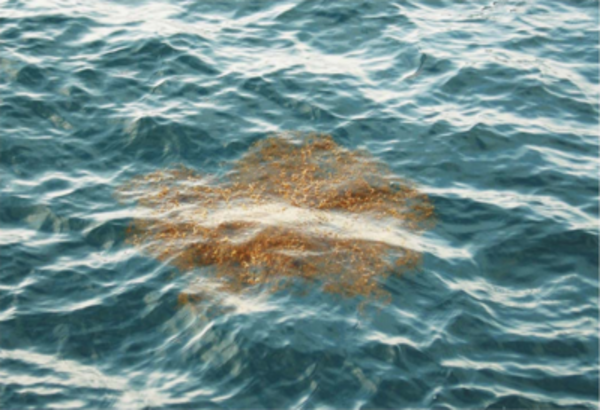Drifting macrophytes as a potential contributor to the deep-sea carbon sequestration
Mar. 12, 2019
Yutaka Kokubu (Atmosphere and Ocean Research Institute, The University of Tokyo /
Present affiliation: Tokyo Metropolitan Research Institute for Environmental Protection)
Eva Rothäusler (Department of Biology, University of Turku /
Present affiliation: Centro de Investigaciones Costeras-Universidad de Atacama)
Jean-Baptiste Filippi & Eric D. H. Durieux (University of Corsica Pasquale Paoli)
Teruhisa Komatsu (Atmosphere and Ocean Research Institute, The University of Tokyo /
Present affiliation: Yokohama College of Commerce)

Researchers at the University of Tokyo and their collaborators have revealed an extensive and seasonal aggregation of macrophytes on the seafloor at the epipelagic and deeper mesopelagic depths (40–1,800m). Furthermore, extreme offshore deposition of floating macrophytes was confirmed to occur on the Pacific side of northeastern Japan where the Kuroshio Extension current prevails.
Marine macrophyte beds consisting of seaweeds and seagrasses have been recognized as one of the highest primary producers in the global carbon cycle. Most macrophytes float from their coastal beds to offshore waters after attaining their highest biomass during their reproductive season. However, the final destinations of the exported macrophytes have not been identified, and their importance to the global carbon cycle remains to be clarified.
These new findings suggest that macrophytes form an organic carbon pathway leading from the coastal euphotic waters to the mesopelagic depth, which serves as a biological pump to enhance the sequestration of atmospheric CO2 in the oceans.
This study was posted on the online scientific journal, Scientific Reports on March 12, 2019 (JST).
Title: Revealing the deposition of macrophytes transported offshore: Evidence of their long-distance dispersal and seasonal aggregation to the deep sea.
DOI: 10.1038/s41598-019-39982-w![]()
![]()



